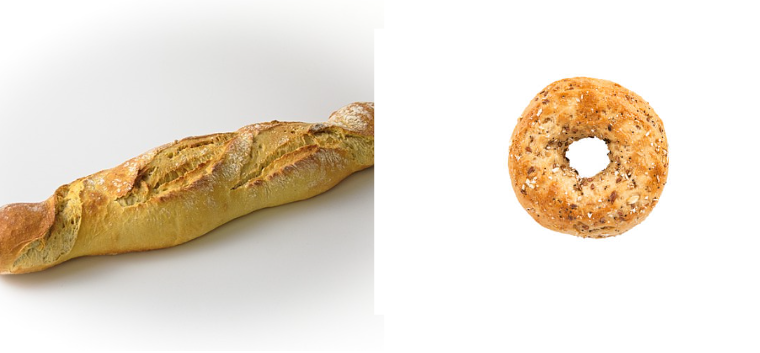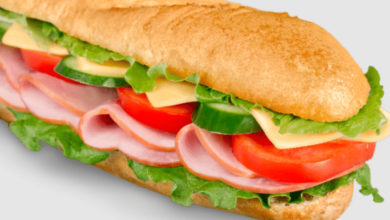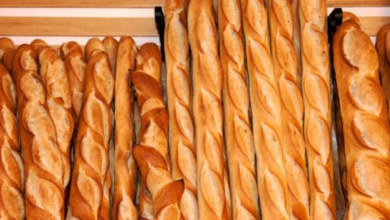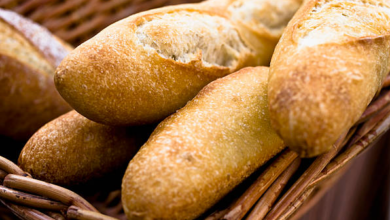The Great Baguette Vs. Bagel Challenge: A Battle for the Best Breakfast Bread

What To Know
- The baguette, a symbol of French gastronomy, traces its roots back to the 19th century, when it became the bread of choice for the working class.
- The baguette’s crispy crust and airy interior make it a versatile bread that can be enjoyed in a variety of ways.
- Whether you prefer the classic elegance of the baguette or the hearty chewiness of the bagel, there’s no denying the allure of these two bread icons.
In the realm of bread, two titans stand tall: the baguette and the bagel. These culinary creations, hailing from different corners of the world, have captured the hearts and taste buds of bread enthusiasts for centuries. In this epic showdown, we delve into the captivating world of baguette vs bagel, exploring their distinct characteristics, flavors, and cultural significance.
History and Origins: A Journey Through Time
The baguette, a symbol of French gastronomy, traces its roots back to the 19th century, when it became the bread of choice for the working class. Its long, slender shape and crispy crust made it easy to transport and share, quickly becoming a staple in French bakeries and households.
Across the Atlantic, the bagel emerged from the Jewish communities of Eastern Europe in the 17th century. Its distinctive ring shape, dense texture, and chewy interior made it a popular breakfast and snack bread. As Jewish immigrants brought their culinary traditions to America, the bagel found a new home, becoming an integral part of New York City’s food culture.
Shaping and Baking: The Art of Crafting Perfection
The baguette’s iconic shape is achieved through a series of precise steps. Bakers carefully roll and stretch the dough, creating a long, thin loaf with pointed ends. The dough is then scored along its length, allowing it to expand during baking and develop a golden-brown crust.
Bagel shaping is a delicate process that requires skill and patience. Bakers form the dough into balls, which are then pierced and stretched to create the signature ring shape. The bagels are boiled before baking, giving them their characteristic chewy texture and shiny exterior.
Taste and Texture: A Symphony of Flavors
The baguette’s crispy crust and airy interior create a delightful balance of textures. Its mild flavor allows it to pair well with a variety of accompaniments, from butter and jam to cheese and charcuterie.
Bagels, on the other hand, boast a denser, chewier texture that stands up to hearty toppings. Their slightly tangy flavor complements schmears of cream cheese, lox, and capers, as well as sweet spreads like jam or honey.
Cultural Significance: Breads Steeped in Tradition
The baguette is deeply ingrained in French culture, symbolizing the nation’s culinary heritage. It is a staple at breakfast, lunch, and dinner, and is often used to make sandwiches, tartines, and crostini. The baguette’s long, slender shape is also a canvas for artistic bakers, who create intricate designs and patterns on its surface.
In Jewish culture, the bagel holds a special place, representing community and tradition. It is a popular choice for Shabbat meals and other Jewish holidays. Bagels are also a symbol of New York City’s diverse culinary landscape, enjoyed by people from all walks of life.
Baguette vs Bagel: The Ultimate Showdown
So, which bread reigns supreme in the baguette vs bagel showdown? The answer, as with many culinary debates, lies in personal preference. Both the baguette and the bagel offer unique flavors, textures, and cultural significance. The baguette’s crispy crust and airy interior make it a versatile bread that can be enjoyed in a variety of ways. The bagel’s dense, chewy texture and tangy flavor make it a hearty and satisfying choice for breakfast or lunch.
Ultimately, the best way to settle the baguette vs bagel debate is to try both and decide which one captures your heart. Whether you prefer the classic elegance of the baguette or the hearty chewiness of the bagel, there’s no denying the allure of these two bread icons.
Versatility in Cuisine: Beyond Breakfast and Lunch
The baguette and the bagel are not confined to the breakfast table. Their versatility extends to a wide range of culinary creations.
Baguettes can be sliced and toasted to make croutons for salads or soups. They can also be hollowed out and filled with savory fillings for a unique appetizer or main course.
Bagels, too, can be enjoyed in a variety of ways beyond the classic breakfast sandwich. They can be sliced and used as burger buns or cut into cubes and toasted for a crunchy addition to salads. Bagels can also be used to make bread pudding, French toast, and even bagel chips.
The Bottom Line: A Celebration of Bread Diversity
The baguette and the bagel, two seemingly different breads, share a common bond: their ability to bring people together. Whether enjoyed at a Parisian café or a New York deli, these breads have become symbols of culinary excellence and cultural pride.
In the great baguette vs bagel debate, there is no clear winner. Both breads offer unique flavors, textures, and cultural significance. The best way to appreciate these culinary treasures is to embrace their diversity and enjoy them for all that they offer.
Frequently Asked Questions:
Q: What is the difference between a baguette and a bagel?
A: Baguettes are long, thin loaves of bread with a crispy crust and airy interior. Bagels are ring-shaped breads with a dense, chewy texture and a slightly tangy flavor.
Q: What are some popular ways to eat a baguette?
A: Baguettes can be enjoyed on their own, sliced and toasted, or used to make sandwiches, tartines, and crostini. They can also be hollowed out and filled with savory fillings.
Q: What are some popular ways to eat a bagel?
A: Bagels are often enjoyed with cream cheese, lox, and capers, or with jam or honey. They can also be sliced and used as burger buns, cut into cubes and toasted for salads, or used to make bread pudding, French toast, and bagel chips.
Q: Which bread is better for sandwiches?
A: Both baguettes and bagels can be used for sandwiches, depending on your preference. Baguettes offer a crispy crust and airy interior, while bagels have a dense, chewy texture.
Q: Which bread is better for breakfast?
A: Both baguettes and bagels are popular breakfast choices. Baguettes can be enjoyed with butter and jam, while bagels are often paired with cream cheese, lox, and capers.





